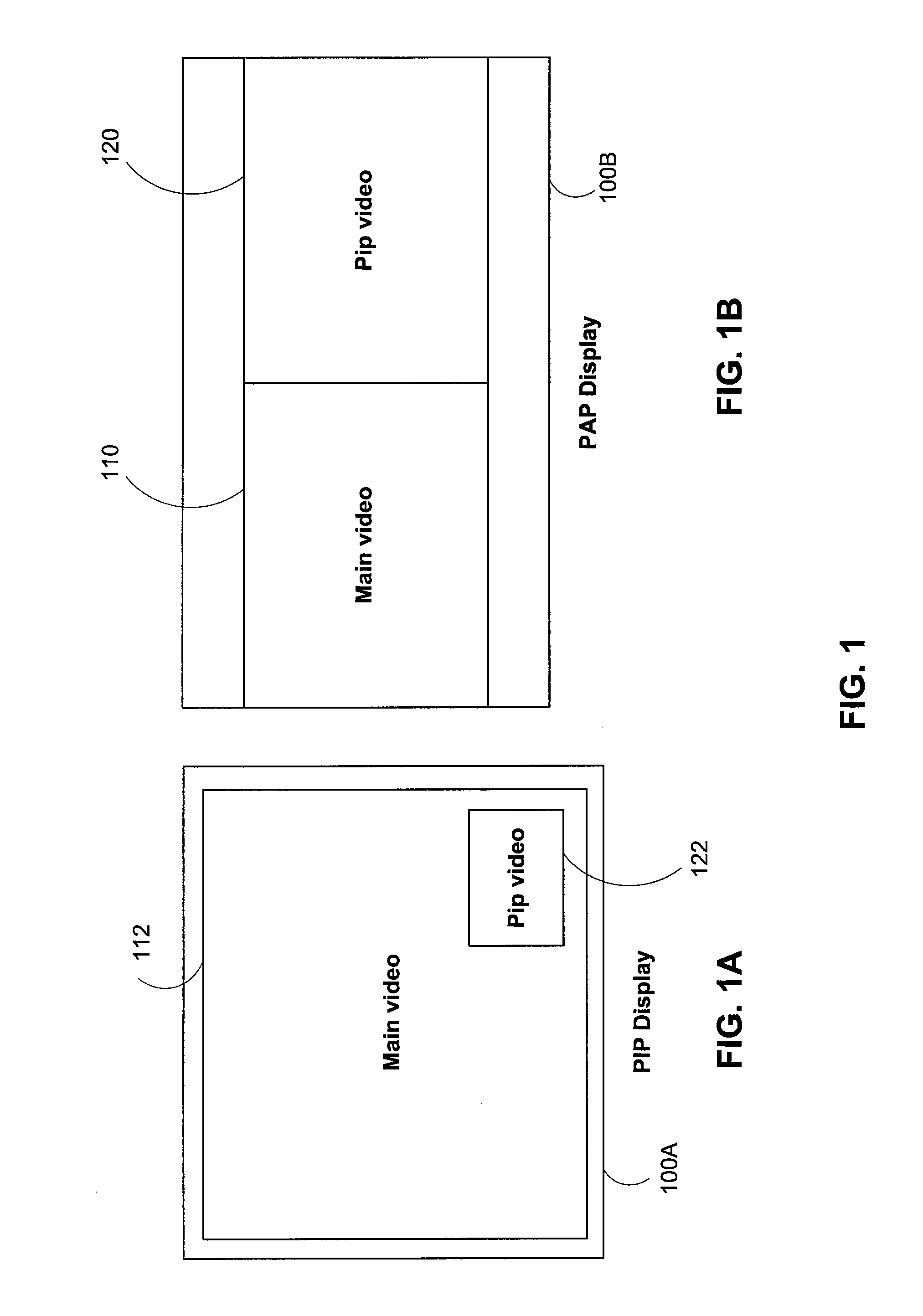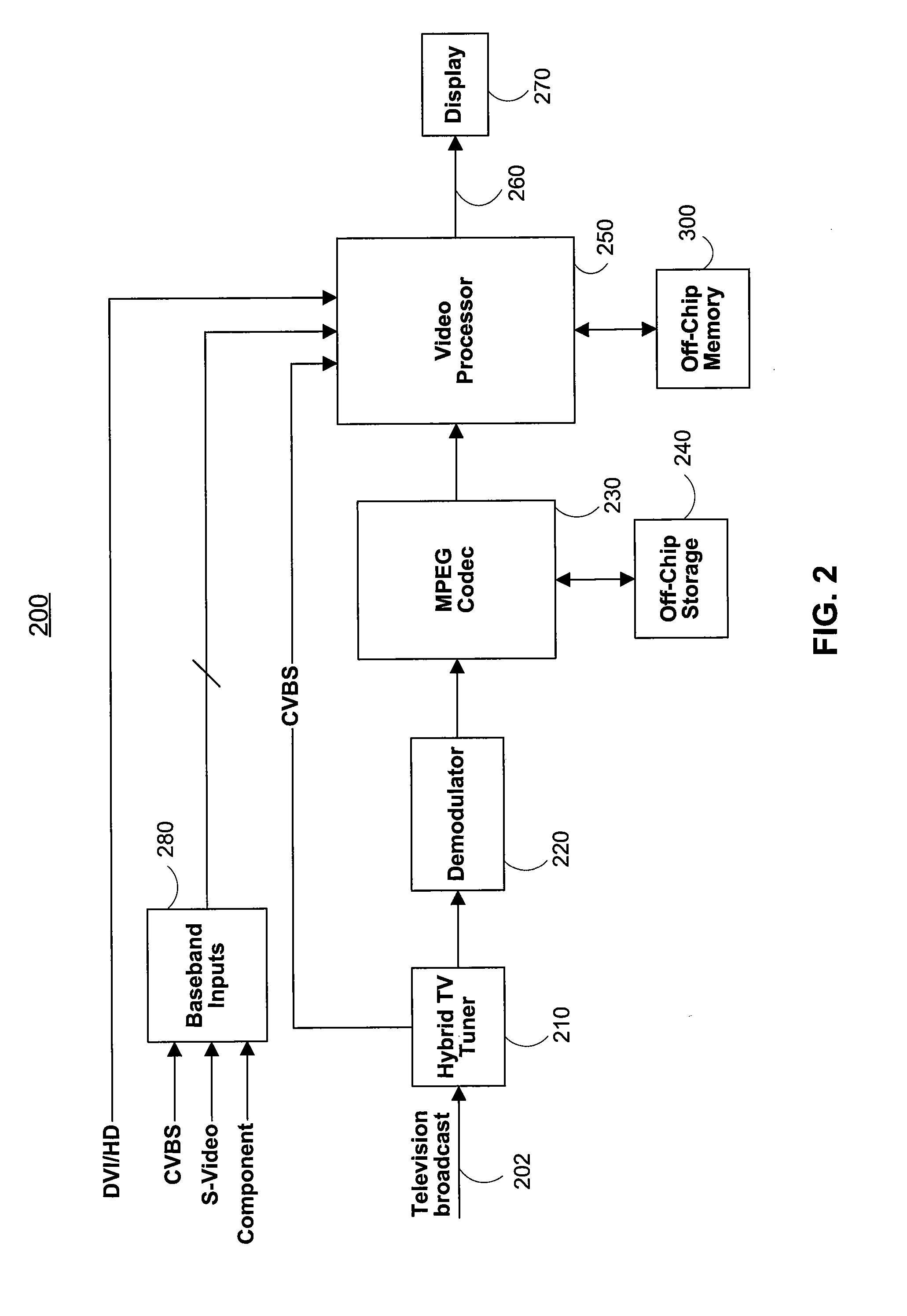Shared memory multi video channel display apparatus and methods
a video channel display and multi-video technology, applied in the field of shared memory multi-video channel display apparatus and methods, can solve the problems of achieve the effects of reducing memory access bandwidth, high-quality video channels, and reducing overall memory bandwidth and capacity requirements
- Summary
- Abstract
- Description
- Claims
- Application Information
AI Technical Summary
Benefits of technology
Problems solved by technology
Method used
Image
Examples
Embodiment Construction
[0044] The invention relates to methods and apparatus for reducing memory access bandwidth and sharing memory and other processing resources in various sections of multiple video pipeline stages of one or more channels in order to produce one or more high-quality output signals.
[0045]FIG. 4 illustrates a television display system in accordance with the principles of the present invention. The television display system depicted in FIG. 4 may include, television broadcast signals 202, a dual tuner 410, MPEG Codec 230, off-chip storage 240, off-chip memory 300, a dual video processor 400, a memory interface 530 and at least one external component 270. Dual tuner 410 may receive television broadcast signals 202 and produce a first video signal 412 and a second video signal 414. Video signals 412 and 414 may then be provided to a dual decoder 420. Dual decoder 420 is shown to be internal to dual video processor 400, but may alternatively be external to video processor 400. Dual decoder ...
PUM
 Login to View More
Login to View More Abstract
Description
Claims
Application Information
 Login to View More
Login to View More - R&D
- Intellectual Property
- Life Sciences
- Materials
- Tech Scout
- Unparalleled Data Quality
- Higher Quality Content
- 60% Fewer Hallucinations
Browse by: Latest US Patents, China's latest patents, Technical Efficacy Thesaurus, Application Domain, Technology Topic, Popular Technical Reports.
© 2025 PatSnap. All rights reserved.Legal|Privacy policy|Modern Slavery Act Transparency Statement|Sitemap|About US| Contact US: help@patsnap.com



